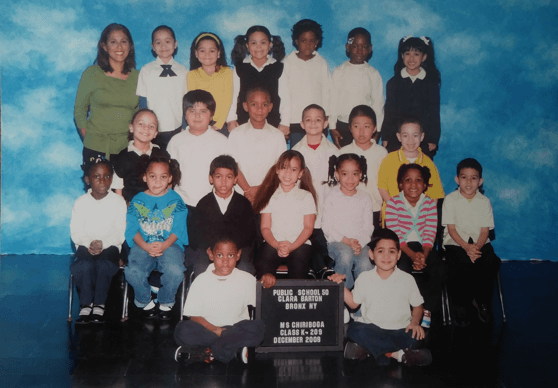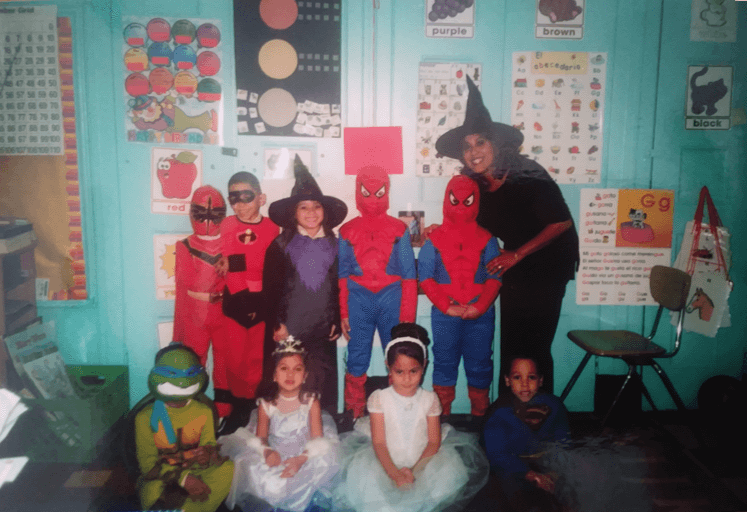Teacher Spotlight: Meet Lisbet Chiriboga, TeachKind’s Program Manager
The Teacher Spotlight highlights the work of various humane educators, giving them a chance to share their stories and tips and inspire other compassionate teachers like you to take action for animals through education.
In this very special—and long overdue—Teacher Spotlight, we’re chatting with Lisbet Chiriboga, PETA’s TeachKind program manager. She was an elementary school teacher in New York City for 12 years. She holds teaching licenses in Teaching English to Speakers of Other Languages (TESOL) for kindergarten through 12th grade and in elementary education for pre-kindergarten through sixth grade, with an additional Bilingual Extension Certificate. She has served on the Executive Board of the United Federation of Teachers’ Humane Education Committee for over a decade and is one of the founders of Humane Education Advocates Reaching Teachers (HEART). She is the lifeblood of TeachKind!

As program manager, Lisbet works directly with thousands of educators nationwide who want to make a difference for animals. She creates comprehensive lesson plans and other educational materials, visits schools to conduct teacher workshops and classroom presentations, and has helped TeachKind forge partnerships with educational resources such as Discovery Education, the Humane Education Coalition, and Sounds First Reading System.
She also facilitates outreach to hundreds of schools every year with lifesaving information about ways humane education can prevent bullying and interpersonal violence in our schools and communities, writes interesting features for the TeachKind website, and does so much more. You can sometimes catch her at education conferences around the country, where she connects with teachers and administrators in person, hands out TeachKind materials, and hosts professional development training sessions.
Even during her down time, Lisbet informs others about the importance of treating all living beings with kindness and respect, conversing with people she meets on her travels and bringing PETA literature with her wherever she goes. When she’s not promoting compassion for animals in the classroom, she can be found spending time at home with Spuds and Cloudy (her two rescued cats), singing karaoke, travelling, or visiting an animal sanctuary.
Lisbet is a goldmine of information when it comes to all things humane education, so we’re thrilled to have the opportunity to learn more about how she overcame challenges in the classroom, the impact that learning about kindness to animals had on her students, and the advice she’d offer to those interested in incorporating compassion into their curriculum.

Tell us what you do at PETA as TeachKind’s program manager.
My goal as program manager is to help TeachKind develop into a leading provider of professional development in humane education. I cultivate partnerships with schools and other educational institutions and provide teachers around the country with support as they implement humane education. I’m excited that we’ve recently partnered with Discovery Education to offer our Share the World program on its streaming service, and we’re also continuing to provide other school districts around the country with professional development and resources.
What’s your favorite part about your work?
I love working with and supporting teachers around the country who understand that it’s important to incorporate compassion for animals into their curriculum! Since I’ve been a classroom teacher myself, I can empathize with teachers and share ideas about lessons and my own experiences in the classroom with them.

What’s your greatest challenge?
Many times, it’s easy to convince principals, superintendents, teachers, and school board members why they should incorporate humane education into the curriculum—it helps children and animals, which is a win-win situation for everyone—but follow-through in the face of other demands sometimes makes implementation a challenge. Schools tend to work from deadline to deadline and are only held accountable for academic scores by governing authorities. I try to help schools see how activities that foster empathy for animals motivate student learning, which can help kids grow academically. It also fosters prosocial behavior, which can lead to decreased behavioral issues over time. I’ve seen increases in motivation and prosocial behavior firsthand throughout my entire teaching career.
I try to help schools see how activities that foster empathy for animals motivate student learning, which can help kids grow academically. It also fosters prosocial behavior, which can lead to decreased behavioral issues over time. I’ve seen increases in motivation and prosocial behavior firsthand throughout my entire teaching career.
Some teachers struggle to understand how to incorporate animal issues into their curriculum. What are some specific ways you did this with your students?
When I taught younger students in grades K–2, I focused on building a foundation of knowledge in students about animals’ needs, explaining that they’re individuals with emotional lives. It’s not necessary (or age-appropriate) to show young children or discuss with them the graphic horrors of what society does to animals. If a child learns that chickens love their babies and talk to them while they’re still inside the egg and that they need to dust-bathe—which they can’t do in a battery cage—they’ll recognize what cruelty is when they see it and they’ll be more inclined to take action. When I taught grade 3–5 students, I could discuss animal issues in a little more depth. I used grade-level texts on circuses, aquariums, and other animal issues to have students practice an academic skill such as inferencing or determining the main idea. Then, we discussed the animal issue addressed in the text. Students loved talking about authentic issues and were really engaged. That’s the idea behind TeachKind’s Rescue Stories worksheet series for all grades from K–12—children can practice reading comprehension skills while simultaneously building empathy for animals.
If a child learns that chickens love their babies and talk to them while they’re still inside the egg and that they need to dust-bathe—which they can’t do in a battery cage—they’ll recognize what cruelty is when they see it and they’ll be more inclined to take action.
How did learning compassion for animals benefit your students? Do you have any particularly inspiring transformation stories?
I had a fourth-grade student who was below grade level in reading and hated books. Once she learned of suffering animals in need of help, she became very motivated to learn more. After that, she couldn’t get her hands on enough books about animals. It was wonderful to see her expand her circle of compassion to all animals—even the ones she didn’t think she cared about in the beginning. It was also thrilling to see her start to seek out books and enjoy reading. In order for children to develop their reading skills, they need to practice reading—and if they don’t, they’ll fall further behind. I’m happy to say that this student started progressing in reading levels, largely thanks to her motivation to help animals.

What about English-language learners? Did teaching kindness to animals benefit them in any way?
In all my years of teaching English-language learners from many different countries, I never met a child who didn’t love animals. Since they do love animals, it motivates children to learn to express their feelings about them—naturally helping them to develop oral language skills.
When my students found out about animals in need of help, they wanted to learn more, so it was a great opportunity to engage them in more cognitively demanding activities that integrated all linguistic skills (reading, writing, listening, and speaking). I had many students who would then take charge of their own learning by searching out additional resources to help them make sense of content.
How did you handle inhumane field trips at your school?
During my first year as a teacher, the whole grade was going to the zoo. I decided that instead of alienating the other teachers (whom I didn’t know very well yet) or the parents by not taking my class on the trip, I would use it as a teachable moment. So before the trip, we did a whole unit to learn all about the animals we would see there—including what their favorite foods were. And I encouraged my students to ask questions of the zookeepers when we were at the zoo based on their knowledge. I’ll always remember the moment my students asked where the acacia tree was in the giraffe exhibit, since that’s those animals’ favorite food. The students gave the zookeepers an earful after learning that there were no acacia trees at the zoo—which meant that giraffes were being deprived of their favorite food. That was just the starting point for the children to realize how wrong it is to take animals away from their families and natural habitat and hold them captive. After that, I decided to organize all the trips for my grade, so we only went on humane field trips beyond that point.
What advice would you give someone who wants to start teaching humane education but isn’t sure where to begin?
Make sure to be a team player in your school community. That means volunteering to chaperone the school dance or helping out with the PTA. Then, if anything you do is questioned, your commitment to the community will be taken into account before judgement is passed. Also, make sure that each lesson you do on an animal rights issue has an academic component. It’s educationally appropriate to expose students to different ideas and perspectives about animals—just make sure to do that in a way that gets students thinking critically and drawing their own conclusions.






